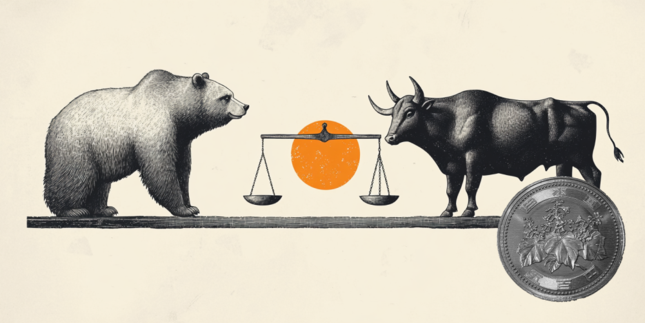- USD/CHF weakens to around 0.8840 in Tuesday’s early European session.
- The swirl of uncertainty surrounding the forthcoming US tariffs weighs on the US Dollar.
- The Swiss Real Retail Sales rose 1.6% YoY in February, stronger than expected.
The USD/CHF pair softens to near 0.8840 during the early European session on Tuesday. The US Dollar (USD) edges lower against the Swiss Franc (CHF) as traders grow risk-averse ahead of US trade tariffs expected to be unveiled on Wednesday.
Several Trump administration officials suggested that reciprocal tariffs would be focused on a handful of countries that have large trade imbalances with the US. However, US President Donald Trump said that his “reciprocal tariffs” plan will target all other countries when they are unveiled on Wednesday. The lack of advance clarity on trade policy, along with the potential economic impact of another round of sweeping tariffs, could undermine the Greenback in the near term.
Data released by the Swiss Federal Statistical Office on Tuesday showed that the country’s Real Retail Sales rose 1.6% YoY in February, compared to a rise of 2.9% in January (revised from 1.3%). This reading came in stronger than the expectation of 1.5%. The Swiss Franc remains firm in immediate reaction to the upbeat Swiss economic data.
Meanwhile, global uncertainties and persistent geopolitical tensions could boost the safe-haven flows, benefiting the CHF. Trump also threatened Iran over the weekend with bombing and secondary tariffs if Tehran did not come to an agreement with Washington over its nuclear program. Iran officials warn against any military adventurism and will respond swiftly and decisively to any act of aggression or attack by the US or its proxy, against its sovereignty, territorial integrity, or national interests.
Swiss Franc FAQs
The Swiss Franc (CHF) is Switzerland’s official currency. It is among the top ten most traded currencies globally, reaching volumes that well exceed the size of the Swiss economy. Its value is determined by the broad market sentiment, the country’s economic health or action taken by the Swiss National Bank (SNB), among other factors. Between 2011 and 2015, the Swiss Franc was pegged to the Euro (EUR). The peg was abruptly removed, resulting in a more than 20% increase in the Franc’s value, causing a turmoil in markets. Even though the peg isn’t in force anymore, CHF fortunes tend to be highly correlated with the Euro ones due to the high dependency of the Swiss economy on the neighboring Eurozone.
The Swiss Franc (CHF) is considered a safe-haven asset, or a currency that investors tend to buy in times of market stress. This is due to the perceived status of Switzerland in the world: a stable economy, a strong export sector, big central bank reserves or a longstanding political stance towards neutrality in global conflicts make the country’s currency a good choice for investors fleeing from risks. Turbulent times are likely to strengthen CHF value against other currencies that are seen as more risky to invest in.
The Swiss National Bank (SNB) meets four times a year – once every quarter, less than other major central banks – to decide on monetary policy. The bank aims for an annual inflation rate of less than 2%. When inflation is above target or forecasted to be above target in the foreseeable future, the bank will attempt to tame price growth by raising its policy rate. Higher interest rates are generally positive for the Swiss Franc (CHF) as they lead to higher yields, making the country a more attractive place for investors. On the contrary, lower interest rates tend to weaken CHF.
Macroeconomic data releases in Switzerland are key to assessing the state of the economy and can impact the Swiss Franc’s (CHF) valuation. The Swiss economy is broadly stable, but any sudden change in economic growth, inflation, current account or the central bank’s currency reserves have the potential to trigger moves in CHF. Generally, high economic growth, low unemployment and high confidence are good for CHF. Conversely, if economic data points to weakening momentum, CHF is likely to depreciate.
As a small and open economy, Switzerland is heavily dependent on the health of the neighboring Eurozone economies. The broader European Union is Switzerland’s main economic partner and a key political ally, so macroeconomic and monetary policy stability in the Eurozone is essential for Switzerland and, thus, for the Swiss Franc (CHF). With such dependency, some models suggest that the correlation between the fortunes of the Euro (EUR) and the CHF is more than 90%, or close to perfect.
Information on these pages contains forward-looking statements that involve risks and uncertainties. Markets and instruments profiled on this page are for informational purposes only and should not in any way come across as a recommendation to buy or sell in these assets. You should do your own thorough research before making any investment decisions. FXStreet does not in any way guarantee that this information is free from mistakes, errors, or material misstatements. It also does not guarantee that this information is of a timely nature. Investing in Open Markets involves a great deal of risk, including the loss of all or a portion of your investment, as well as emotional distress. All risks, losses and costs associated with investing, including total loss of principal, are your responsibility. The views and opinions expressed in this article are those of the authors and do not necessarily reflect the official policy or position of FXStreet nor its advertisers. The author will not be held responsible for information that is found at the end of links posted on this page.
If not otherwise explicitly mentioned in the body of the article, at the time of writing, the author has no position in any stock mentioned in this article and no business relationship with any company mentioned. The author has not received compensation for writing this article, other than from FXStreet.
FXStreet and the author do not provide personalized recommendations. The author makes no representations as to the accuracy, completeness, or suitability of this information. FXStreet and the author will not be liable for any errors, omissions or any losses, injuries or damages arising from this information and its display or use. Errors and omissions excepted.
The author and FXStreet are not registered investment advisors and nothing in this article is intended to be investment advice.
Recommended content
Editors’ Picks

AUD/USD holds steady above 0.6300; looks to US NFP for fresh impetus
AUD/USD stalls the previous day's pullback from the 0.6400 neighborhood, or over a two-week high, and oscillates in a range during the Asian session on Friday ahead of the US NFP. In the meantime, the USD struggles to lure buyers as Trump's sweeping tariffs lift recession fears, which might force the Fed to resume its rate-cutting cycle soon.

USD/JPY recovers slightly from multi-month low; upside seems limited ahead of US NFP
USD/JPY attracts some buyers during the Asian session on Friday and moves away from its lowest level since October set the previous day. Investors scale back their expectations that the BoJ would raise policy rate at a faster pace amid worries that Trump's new tariffs could negatively impact Japan's economy, which is seen weighing on the JPY.

Gold holds positive ground above $3,100, all eyes on US NFP data
Gold price recovers some lost ground to near $3,115 during the Asian session on Thursday after facing some profit-taking in the previous session. Escalating concerns over a global trade war and ongoing geopolitical risks boost the Gold price, a traditional safe-haven asset.

What to expect from Bitcoin and XRP following Trump tariffs: Experts weigh in
Bitcoin stretched its decline on Thursday, briefly dropping below $83,000 as President Trump's newly announced reciprocal tariffs extended the crypto market downturn by over 4%. The sustained decline and high volatility highlight Bitcoin's increasing risk to macroeconomic uncertainties.

Trump’s “Liberation Day” tariffs on the way
United States (US) President Donald Trump’s self-styled “Liberation Day” has finally arrived. After four straight failures to kick off Donald Trump’s “day one” tariffs that were supposed to be implemented when President Trump assumed office 72 days ago, Trump’s team is slated to finally unveil a sweeping, lopsided package of “reciprocal” tariffs.

The Best brokers to trade EUR/USD
SPONSORED Discover the top brokers for trading EUR/USD in 2025. Our list features brokers with competitive spreads, fast execution, and powerful platforms. Whether you're a beginner or an expert, find the right partner to navigate the dynamic Forex market.



